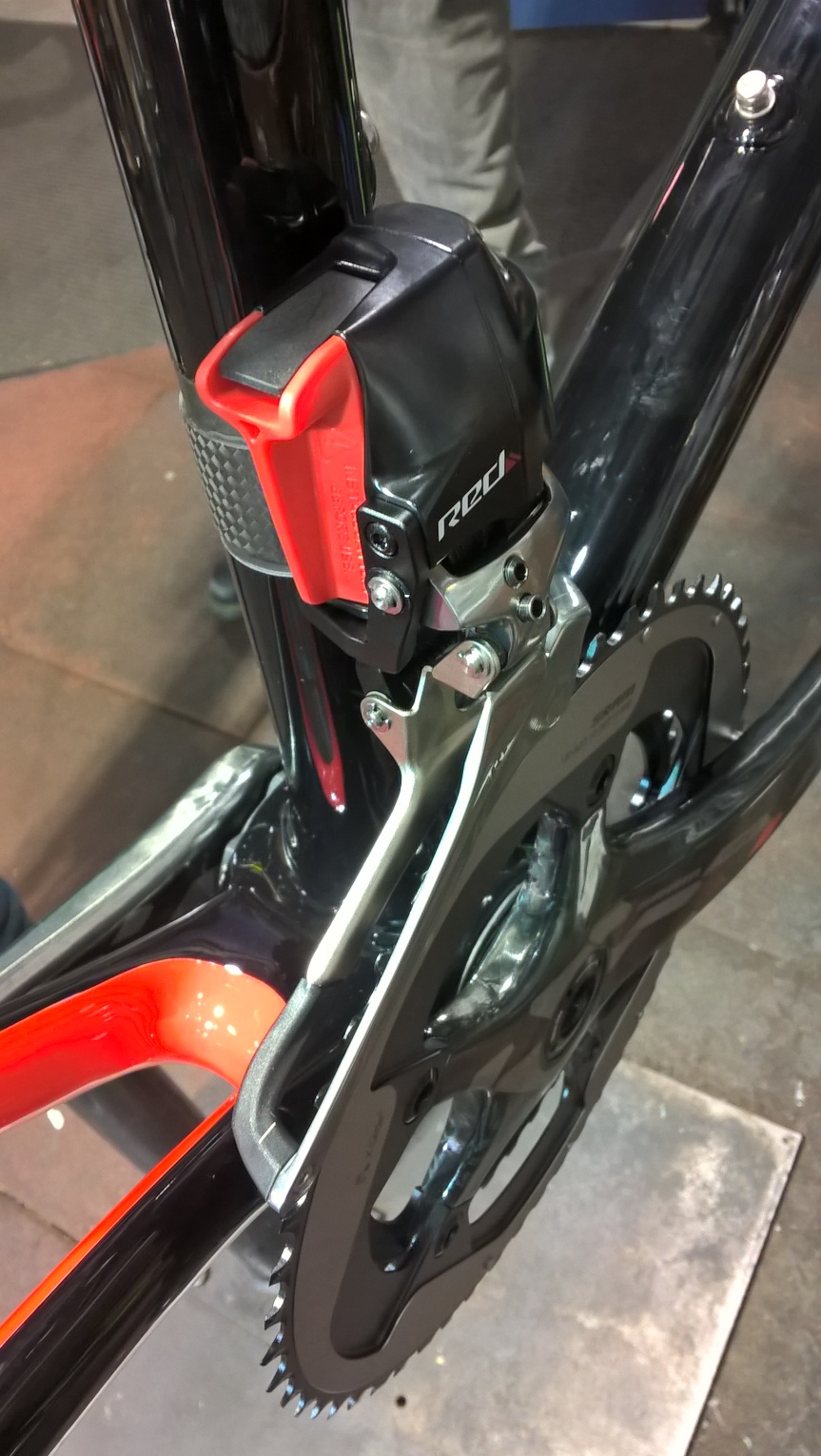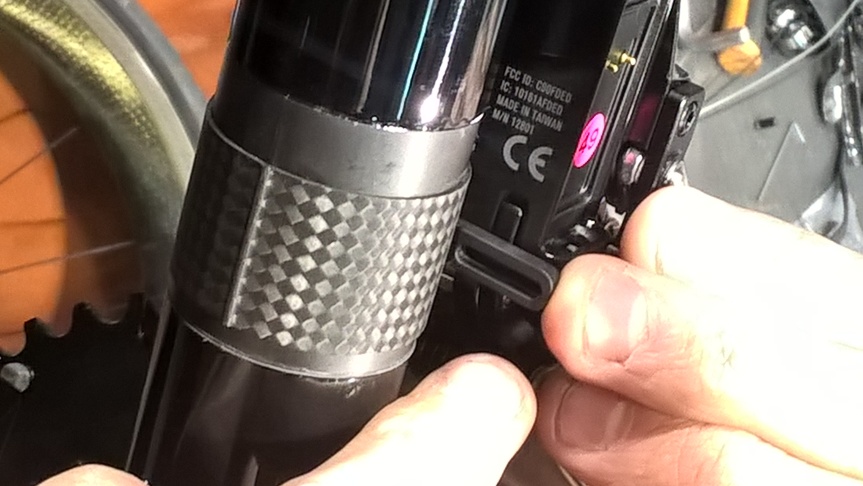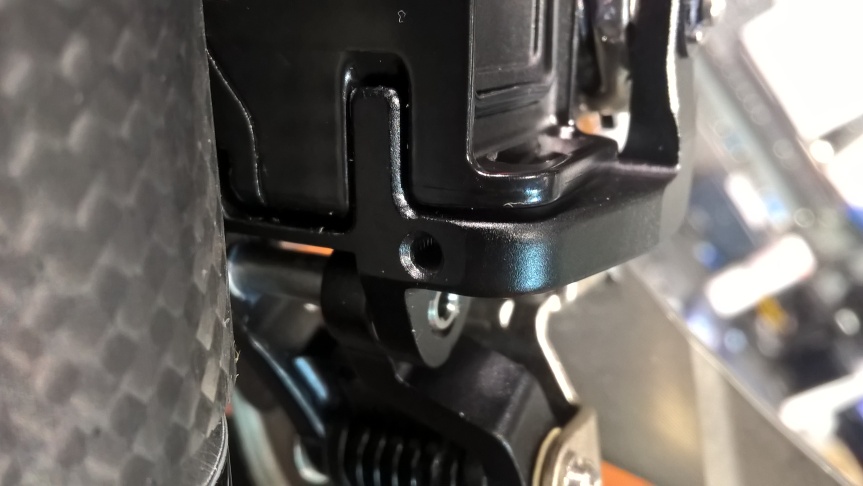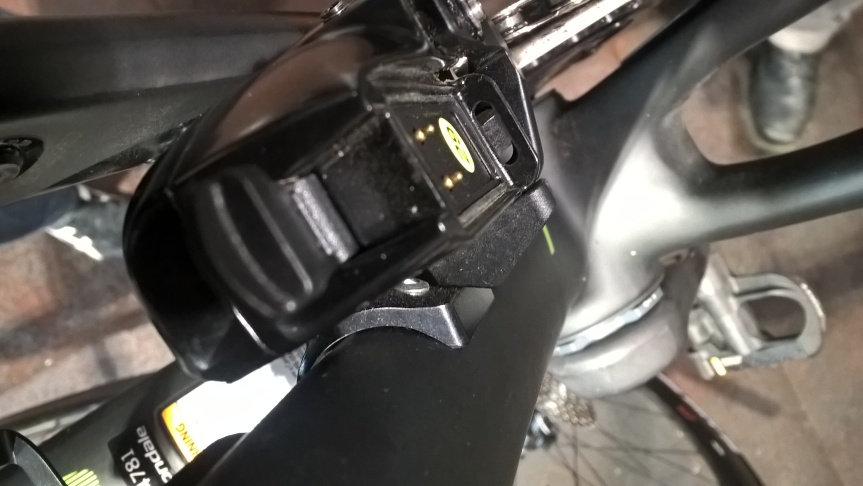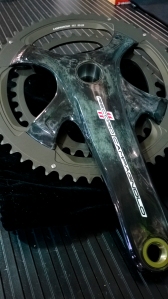Hello everyone! I have some exciting information and photos to share with you on the new Specialized Turbo Levo mountain bike. One of our guys got to fly out to Moab this past weekend for some press release testing and rides and gave me the low down on many of the specs and what to expect from this new kind of bike. 
First off, the Levo gets much of the DNA that exists in the Specialized Stumpjumper. The bottom bracket is a bit higher though as well as shorter crank arms and chainstays to avoid striking rocks. It has the shortest chainstays in its class. It comes stock as a 6fattie wheel setup and can also be converted to a 29er. The 29er, however, only gains a slight 6 watt gain over the 6fattie. My thoughts would be that the bike will be most stable with the larger tire. It also has a low center of gravity to help keep it stable. The rear shock has been specifically tuned to for the additional weight of the bike.
The Levo comes in three configurations. The SWORKS weighs in at 42lbs and will cost about $10,000, the Expert level weighs in at 44l bs and will cost about $6-7,000, and the Comp level weighs in at 47lbs and costs about $3,500. The SWORKS and Expert level Levos are equipped with a 504 Wh battery and the Comp comes with a 400 Wh battery. Both are Lithium ion batteries that use the same cells that exist in the Tesla. A Tesla has 8000 cells, where a Levo has 40 cells and the Turbo S has 60. So, that’s a pleasant feature because cheaper cells usually do not react well from vibration (much less from jumps and drops). The battery weighs 9lbs.
bs and will cost about $6-7,000, and the Comp level weighs in at 47lbs and costs about $3,500. The SWORKS and Expert level Levos are equipped with a 504 Wh battery and the Comp comes with a 400 Wh battery. Both are Lithium ion batteries that use the same cells that exist in the Tesla. A Tesla has 8000 cells, where a Levo has 40 cells and the Turbo S has 60. So, that’s a pleasant feature because cheaper cells usually do not react well from vibration (much less from jumps and drops). The battery weighs 9lbs.
The motor is integrated into the bottom of the downtube and has a 250 watt nominal power with a peak of 530 watts and a torque of 90Nm. It is definitely the smoothest on the market and extremely quiet with a Gates belt drive. In order for the motor to engage and apply power, torque must be sensed on the pedals and the rear wheel must have rotation. The power meter to sense the torque in hidden inside behind the rear rotor. This is great because if there is no movement, but you are pressing on the pedals, the bike won’t engage and lurch forward. it will only apply the power once you are moving and pedaling. This makes a lot of sense because you don’t really need the motor part when going down hill for the most part.
Both the motor and the battery are Bluetooth and ANT+ compliant, which removes the need for an LCD screen. Diagnosis, battery level, and other features of the state of the bike are communicated to either your phone (via the Mission Control app) or through the Garmin Edge 1000 or 520. The harness for the battery is magnetic and (once the bike is off) can be easily removed and charged on or off the bike. The motor is also removable and can be diagnosed through the app.
As far as the ride quality, it is top-notch. A 3-5 hour ride is easily feasible for a single charge, which is mostly due to the mid motor setup versus the hub motor. The field test rides done in Moab were almost 50 miles together with about 5,000 feet of climbing. The turbo mode is almost too much power and can cause skidding, but is fantastic to be able to ride to the trails and back. Most of the effective riding was best done at the Eco mode with a little Trail (more robust) mode here and there.
Climbing is exceptionally great (it was able to clear two foot ledges with ease uphill). The bike audibly tells you to change gears if the motor is working too hard. A higher pitched whine from the motor occurs if you are in too low of a gear and a deeper low rumble if you are in too high of a gear. Like most full-suspension mountain bikes, it is best to be seated while climbing . Because of the extra power, 3 mile ascents are much easier to handle without issue than with a standard mountain bike. For descending, it handles great and the extra weight keeps you close to the ground.

So, additionally, Specialized has gotten together with Strava to create a new ebike category on segments, which will have their own KOMs and leaderboards compared to regular mountain bikes. In summary, I think this is going to be an awesome bike to let people have a great mountain bike ride even if they are not exceptionally experienced. It is spec’d really well and I have followed social media of people testing them in Europe for a while, so I would expect that most of the bugs have already been worked out. More to come when we get one in the shop to build. I’ll post a good article of the build and closeups of all of the features it has to offer.




